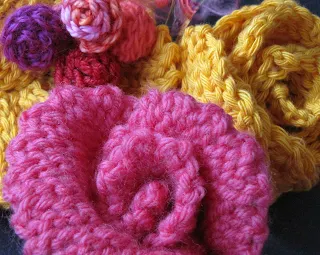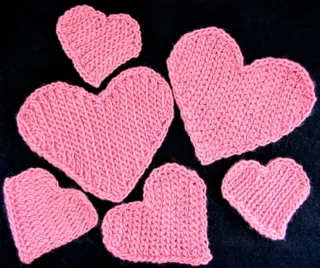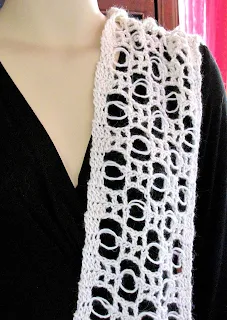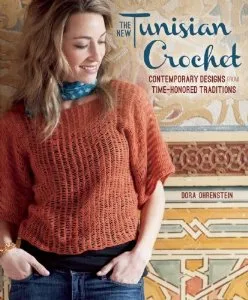 |
| The Starpath Scarf, one of several Lotus yarn patterns! |
Scroll to the end of this post for a clickable list of all posts in this series.
 |
| Lotus Yarn in "White Blaze" |
Freelance designers do not get paid for all the time it takes to get to know a yarn, yet this is one reason that creating design proposals, especially for yarn companies, is so time consuming. (For magazines, this task is delayed until you find out which yarn gets assigned to your design proposal.)
 |
| Big ol' cones of rosy Lotus colors |
Over the past few months I’ve been developing a new yarn, and I mean new: not offered elsewhere. The first is called Lotus, and it's
 |
| My Tunisian Wicker Stitch in "Satin Grey" Lotus |
 |
| DesigningVashti Lotus Yarn in "Crystal Blue" |
Yarn mill folks seem to appreciate that I study yarns and have some ideas to try. This is a great relief to me! I was afraid I’d get blank looks, or “Well, that’ll cost you!” responses. Instead, they seem more relieved and curious.
 |
| Brushed Shells in color "Peachy Sheen" |
I’m getting ahead of myself, though.
Today, what brings me to my blog is that I’m in a design slump! Not a crochet slump, just a design slump (it happens every time I return from teaching a lot of classes at a national conference.)
Being surrounded by my Lotus yarn in rainbow colors makes this slump a fun experience.
(By the way, I never know how the colors are going to show up on different computer screens, so I try different kinds of lighting and add various photos everywhere.)
 It turns out that designing a YARN and making it a reality is like having a baby, in several ways: the months of anticipation, choosing a name, and the "labor." I even had to prepare a new room for its arrival.
It turns out that designing a YARN and making it a reality is like having a baby, in several ways: the months of anticipation, choosing a name, and the "labor." I even had to prepare a new room for its arrival.  |
| Zenobia Palm Stitch in color "Pearly Pearl" |
Crocheting with a yarn is like getting to know a new person. Each has a distinct temperament, unique strengths & weaknesses, and preferences. The better one knows a yarn, the better a design will work for it.
As a crochet designer with my own yarn company, I don’t have to go on blind dates with yarns I may never design with again. Lotus is family!
-:-------:-
Other posts in this series (in chronological order):
- "Creating Color Cards for a New Yarn."
- "How Lotus Got Its Name"
- "Birth of a Yarn Company, About Five Months In"
- "How (Not) to Sell Yarn at a Crochet Conference"
- "My Lotus Yarn in Magazines: What It's Like!"
- "DesigningVashti Lotus Yarns at the 12 Year Mark"
- "DesigningVashti Lotus Yarn: in the Magazines (a Gallery)"
- "Crochet Yarn Put Up, Part I of II"






































